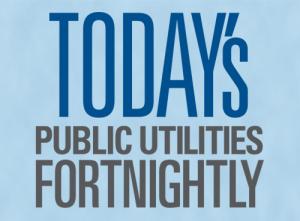You Want Proof?

If you needed any more proof that the two heavy hitters of zero-emission are key to combatting climate change, the latest Energy Dept. data does it.
In March, 38.4 percent of the U.S. electric grid’s power was zero-emission. Geothermal, hydro, nuclear, solar, wind.
Of the two hundred and nineteen months of this century, the grid’s zero-emission percent was greater – and just slightly so – in only eight months. March and April 2016. February, March and April 2017. February, March and April 2018. That’s it.
The record is held by April 2018, when 40.1 percent of the grid’s power was zero-emission. It was the first and only time we reached the forty mark. Signifying that two-fifths of our electricity was made without emitting carbon dioxide.
This March saw 124 million megawatt-hours of zero-emission production of electricity. Another 5.3 million and we would have reached the forty mark for the second time.
Geothermal and solar can’t help much in closing that 5.3 million megawatt-hour gap. Geothermal produced but 1.5 million in March and has never topped 1.6 million in any month. Solar, which is rapidly growing, produced 6 million in March and has never topped 7.8 million in any month (predictably in a summer month).
Hydro, one of those two heavy hitters of zero-emission, produced 25.4 million in March. Back in May 2011, hydro set the monthly record at 32.6 million megawatt-hours. But hydro production of electricity can dip to as low as half that – or not much more – in a month, and it has in some recent months.
When hydro dips like that, the big loss in zero-emission blows away the growth in wind and outshines the growth of solar. By a lot.
Nuclear, the other one of the two heavy hitters of zero-emission, produced 65.1 million in March. Nuclear set the monthly record in January 2018 at 74.6 million. It was as high as 73.7 million in January of this year, this despite the recent nuclear plant retirements.
Retire some more nukes and you can kiss goodbye the forty mark for zero-emission for a while. Since each plant produces such a huge quantity of power.
To illustrate this crucial point, take the last remaining nuclear plant under construction, Vogtle 3-4. With a capacity of twenty-five hundred megawatts, when construction is completed, it will be able to produce as much as 1.9 million megawatt-hours in a month all by itself.
So if Vogtle 3-4 had been in service in recent years, the U.S. grid would have reached the forty mark in zero-emission in April 2017 and March 2018. In addition to the one month we actually did reach the forty mark (in April 2018).
And, the grid would have come mighty close to the forty mark in March 2016, March 2017 and February 2018. And fairly close in April 2016 and February 2017.
Think about it, what we’re saying here. Finishing one nuclear project means forty percent of the grid’s power would be zero-emission pretty much each spring. Just like that.



